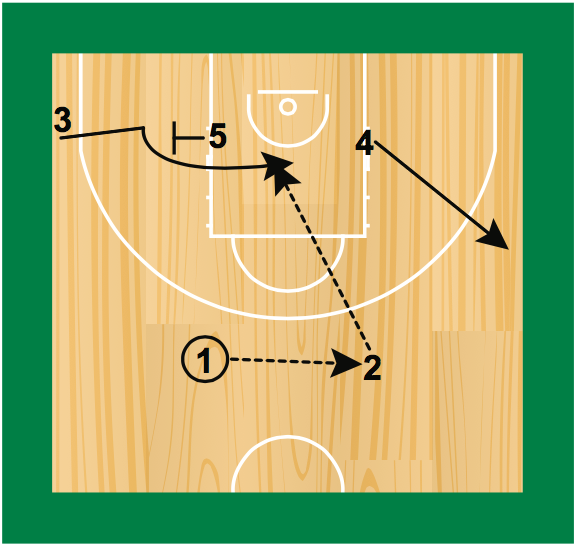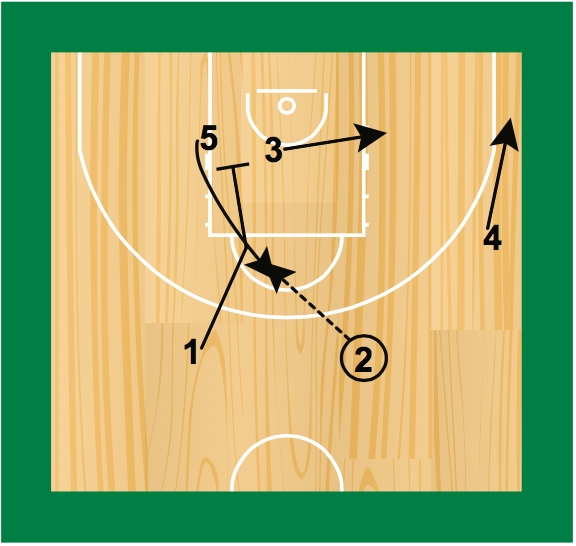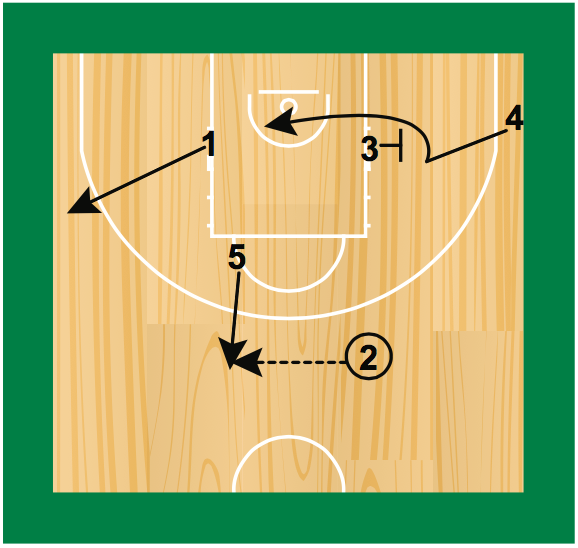- 2.2.1 Motion offence - 3 out, 2 in - screen the screener
- 2.2.2 Motion Offence - 3 Out 2 In – multiple screens for the shooter
- 2.2.3 Motion offence - 3 out, 2 In - Double Screens
- 2.2.4 Motion offence - 3 Out, 2 In - Blind (Back) Screens
- 2.2.5 Motion offence - 3 Out, 2 In - Pick and Roll with Triangle on Help Side
- 2.2.6 Motion offence - 3 out, 2 in - cuts off high post screen
- 2.2.7 Motion offence - 3 out, 2 in - 1v1 isolation
- 2.2.8 Shot selection - importance of the corner 3
- Follow-up
- 3.2.1 Characteristics of long tournament play
- 3.2.2 Long tournaments - selecting the team
- 3.2.3 Long tournaments - preparing the team prior to tournament
- 3.2.4 Long tournaments - scouting
- 3.2.5 Long tournaments - keeping players fresh
- 3.2.6 Long tournaments - coaching staff
- 3.2.7 Long tournaments - organising the off-court
- Follow-up
Level 3
2.1.2 “Flex”
This summary is provided so that coaches may have some familiarity with each of them. However, any coach interested in introducing some of these concepts should seek out further information.
Coaches of young players must be particularly careful to ensure that players do not become so fixated on running the particular “movement” that they do not learn to correctly identify opportunities to “beat” their defenders and score.
An example of this, is where a play requires the ball to be passed to a particular player. Young players may concentrate on that option to the extent that they do not see other passing opportunities and will “force” this
pass instead.
To avoid this, in practice coaches should allow players to make “reads” and where a player makes a pass that is different to what the play required, the coach should ask the player what they saw and why they attempted that particular pass, where were defenders positioned, where their team mates were etc. It may be that in this context, the coach will agree that what the player did was appropriate.
If the coach simply insists that players must follow the play, they will not learn to read the defenders. And whilst they may initially have success with the play, other teams will soon learn what they are doing and will defend it.
Set offensive plays should be used as a framework, which is designed to create offensive opportunities but most of all, players must be taught to react to whatever the defence does.
“Flex”
“The Flex” is a patterned offence that is a “continuity” offence because a team
can play it on one side of the floor and then the other in a continuous fashion. The offence is most effective against “man to man” defences and it will often create size “mismatches” through its screening action.
The basic motion of “The Flex” includes a baseline cut off a back screen and then “screen the screener” action.


